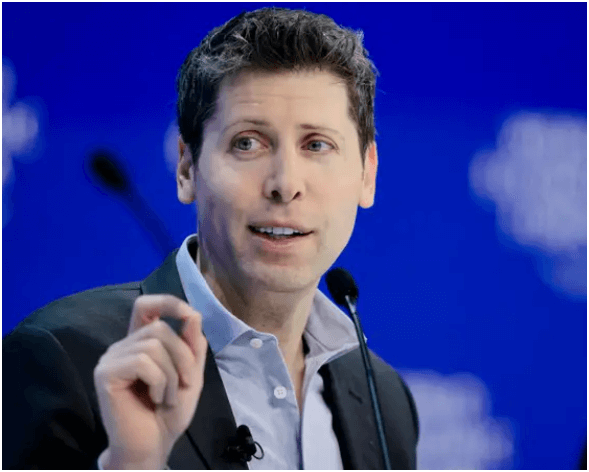AI Marvel: OpenAI’s Sam Altman Amazed by GPT-4o’s Movie-like Artificial Intelligence
In a remarkable feat of technological advancement, OpenAI’s latest iteration of its language model, GPT-4o, has left industry insiders and enthusiasts astounded with its movie-like artificial intelligence capabilities. Sam Altman, the CEO of OpenAI, expressed his amazement at the model’s prowess, heralding a new era of AI sophistication and potential applications across various domains.
GPT-4o represents the culmination of years of research and development in natural language processing and artificial intelligence. Building upon the success of its predecessors, GPT-3 and GPT-4, this latest iteration boasts unprecedented capabilities in generating coherent, contextually relevant text that mimics human-like comprehension and creativity.
What sets GPT-4o apart is its ability to generate text that evokes the narrative style and emotional depth characteristic of blockbuster movies. By analyzing vast amounts of movie scripts, novels, and other literary works, the model has acquired a nuanced understanding of storytelling techniques, character development, and plot dynamics, enabling it to produce text that reads like a scene from a Hollywood movie.
Sam Altman, the visionary leader behind OpenAI, expressed his amazement at the capabilities of GPT-4o, describing it as a “game-changer” in the field of artificial intelligence. In a recent interview, Altman lauded the model’s ability to captivate audiences with its immersive storytelling and compelling narrative arcs, likening it to having a “movie director in a box.”
Altman’s enthusiasm reflects the broader sentiment within the AI community, where GPT-4o is hailed as a landmark achievement in AI research and a testament to the transformative power of deep learning and neural network technologies.
The implications of GPT-4o’s movie-like artificial intelligence extend far beyond entertainment and storytelling. From content creation and marketing to virtual assistants and customer service, the model has the potential to revolutionize how we interact with technology and consume information in the digital age.
In the entertainment industry, GPT-4o could be used to generate plot ideas, develop character dialogues, and even write entire movie scripts, offering filmmakers and writers a valuable tool for brainstorming and creative exploration.
In marketing and advertising, the model could help brands create engaging content that resonates with their target audience, leveraging its ability to craft compelling narratives and persuasive messaging.
In customer service, GPT-4o could enhance chatbots and virtual assistants, providing more natural and conversational interactions with users, and delivering personalized responses tailored to their needs and preferences.
Despite its impressive capabilities, GPT-4o also raises important ethical considerations regarding the responsible use of technologies. As with any powerful tool, there is the potential for misuse, manipulation, and unintended consequences, highlighting the need for ethical guidelines, regulatory oversight, and public discourse to ensure that is deployed in ways that benefit society as a whole.
Altman acknowledges these concerns, emphasizing the importance of transparency, accountability, and user empowerment in its development and deployment. By fostering a culture of responsible innovation and ethical stewardship, aims to harness the transformative potential of it for the greater good while mitigating potential risks and challenges.
GPT-4o represents a major milestone in the evolution of artificial intelligence, showcasing the remarkable capabilities of deep learning models in generating movie-like text with unprecedented realism and sophistication. Sam Altman’s amazement at the model’s abilities underscores its significance as a game-changer in its research and a harbinger of new possibilities for creative expression, storytelling, and human-computer interaction. As GPT-4o continues to push the boundaries of what can achieve, it prompts us to reflect on the profound implications of this technology and the responsibility we have to ensure that it is used ethically, responsibly, and for the benefit of humanity.
However, the widespread adoption of GPT-4o also poses challenges in terms of data privacy, misinformation, and algorithmic bias. As with previous iterations of GPT, there is the risk of amplifying existing biases and stereotypes present in the training data, leading to unintended consequences and societal harm. Additionally, the proliferation of generated content raises concerns about its potential to deceive or manipulate audiences, undermining trust in media and exacerbating issues of misinformation and disinformation.
Addressing these challenges requires a multi-faceted approach that combines technical solutions with regulatory oversight and public awareness campaigns. By implementing safeguards such as transparency measures, bias detection algorithms, and content verification mechanisms, we can mitigate the risks associated with generated content and ensure that it is used responsibly and ethically.
Moreover, the rise of GPT-4o presents new opportunities for interdisciplinary collaboration and innovation across fields such as computer science, linguistics, psychology, and the arts. By bringing together diverse perspectives and expertise, we can harness the full potential of it to address complex challenges, unlock new insights, and enrich the human experience in profound and transformative ways.
Stay informed with the latest updates – click here .

